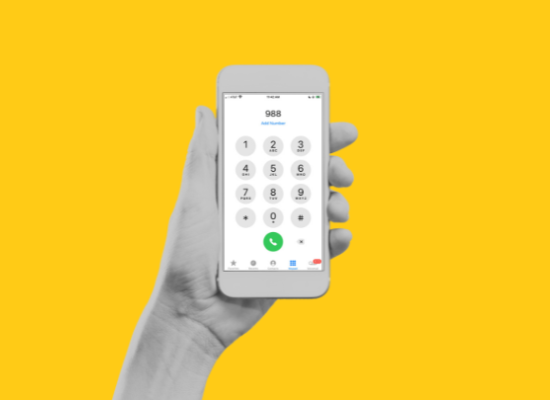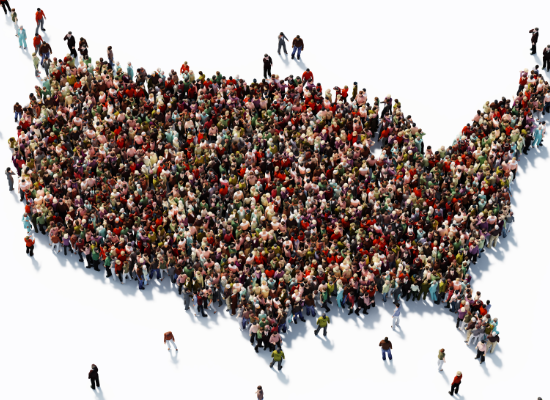
Stephanie Hepburn is a writer in New Orleans. She is the editor in chief of #CrisisTalk. You can reach her at .
On March 15th, Ohio Governor Mike DeWine filed emergency rules, providing complete coverage for mental health telehealth. During the coronavirus, as people navigate this new normal of physical distancing from one another and anxieties and stress mount, communities around the country are quickly supporting mental health initiatives. That’s particularly true of telehealth. Gov. DeWine, who discontinued in-person visitation for the state’s psychiatric hospitals and is working to ensure that there’s video visitation, said the emergency rules allow patients to use “cell phones, FaceTime, etc.,” to communicate with doctors and eliminates the requirement that the “first mental health appointment be conducted in person.”
Mental health challenges go up during health crises. Take care of yourself and take care of your neighbors. We need to take care of each other. We are in this for the long run, this isn’t going to end overnight. #COVID19 #COVID19OhioReady
— Governor Mike DeWine (@GovMikeDeWine) March 14, 2020
The number of identified global cases of coronavirus continues to rise. Those in China, where the outbreak began, appear to be tapering off while numbers in Italy have skyrocketed, overstretching the medical system and leaving patients without lifesaving care. Exhausted medical staff in Italy are working around the clock without the necessary personal protective equipment (commonly known as PPE), exposing them to high amounts of the virus, and CNN reports that at least 23 Italian doctors have died. As of this morning, the Johns Hopkins Center for Systems Science and Engineering data tracker reports that there have been 351,731 people identified with COVID-19; 15,374 people have died, and 100,430 have recovered. The number of people who have been identified with the virus in Italy (59,138) is not as high as those in China (81,496), yet reported deaths have not only met those in China but surpassed it: 5,476 in Italy compared to 3,153 in China.
Stat reported on Saturday that as hospitals become a source for the virus, medical workers in Italy are pleading with their peers to tap into telehealth and mobile clinics. Maurizio Cereda, MD, co-director of surgical ICU at Penn Medicine, encourages medical staff to go to patients’ homes: “Bring them nutrition, measure their oxygen levels, even bring them oxygen, and you can probably keep many of them at home.” That same day, doctors at the Papa Giovanni XXIII Hospital in Bergamo, the epicenter of the outbreak in Italy, published At the Epicenter of the Covid-19 Pandemic and Humanitarian Crises in Italy: Changing Perspectives on Preparation and Mitigation in NEJM Catalyst. Mirco Nacoti, MD, and his colleagues wrote that the hospital has become highly contaminated, and even though the hospital is state-of-the-art and has 48 ICU beds, it still can’t keep up.
“…we are far beyond the tipping point: 300 beds out of 900 are occupied by Covid-19 patients. Fully 70% of ICU beds in our hospital are reserved for critically ill Covid-19 patients with a reasonable chance to survive. The situation here is dismal as we operate well below our normal standard of care. Wait times for an intensive care bed are hours long. Older patients are not being resuscitated and die alone without appropriate palliative care, while the family is notified over the phone, often by a well-intentioned, exhausted, and emotionally depleted physician with no prior contact.”
The authors go on to state that what can mitigate the crisis is telemedicine, home care, and mobile clinics, which “avoid unnecessary movements and release pressure from hospitals.” This would keep people out of the hospital and target care to those who need it most, “thereby decreasing contagion, protecting patients and health care workers, and minimizing consumption of protective equipment.”
John Scott, MD, is the medical director for digital health at the University of Washington, which, until recently, was the epicenter of the coronavirus pandemic in the United States. Now it’s New York City. He told the Association of American Medical Colleges (AAMC) that one vital step China took to reduce the spread of infection was making 50% of their care virtual. “If you look at what China did, they did a really bad job initially, and then it became apparent that they did a lot of things right.” He pointed out that China didn’t just step up its virtual care game but also simultaneously took on other significant countermeasures like mass quarantine and social distancing. As a result, the number of reported daily confirmed deaths in China has decreased.
There’s no way to know precisely how the demand on the crisis continuum and mental health services will increase in the United States, but it will likely be similar to what has transpired in communities during other disasters. The difference, of course, is that the impact is happening on a national scale. John Draper, Ph.D., project director of the SAMHSA-funded National Suicide Prevention Lifeline (800.237.TALK or chat), told #CrisisTalk on Monday that member call centers are seeing a spike in calls—roughly a 5% increase, which “could change as the situation worsens.” He noted that the Disaster Distress Helpline is experiencing a 58% increase, but that is to be expected. “It’s a small volume network and is designed to respond to emotional distress situations based on mass community impact events such as man-made or natural disaster.”
Experts suspect that the demand on the mental health system will continue to increase as people during this public health emergency are further impacted by job loss, housing instability, financial distress, and illness, coronavirus related, or not. Furthermore, as communities across the country shut down bars and liquor stores (also called ABC stores), more people will likely experience alcohol withdrawal and need substance use and mental health services.
Each community looks a bit differently when it comes to telehealth, and with rapid expansion in mental and physical health telehealth, how they are doing it now may be quite different in the upcoming days, weeks, and months. On March 9th, the Centers for Medicare & Medicaid Services (CMS) released a fact sheet with Medicare program guidance for “healthcare providers and patients about the telehealth benefits.” The agency said the fact sheet is part of its broader effort, in conjunction with the White House Task Force, to make all Americans—especially people at higher risk of experiencing complications if infected with COVID-19—aware of accessible, easy-to-use benefits that can keep them healthy “while helping to contain the community spread” of the illness. On March 17th, CMS released a second fact sheet, reviewing expanded Medicare telehealth services and payment for virtual services that build on the regulatory flexibility provided by President Trump’s emergency declaration. The agency states that access was broadened so that “beneficiaries can receive a wider range of services from their doctors without having to travel to a healthcare facility.”
The American Medical Association’s quick guide to telemedicine in practice highlights that to do the same for Medicaid, states, individually, must request Medicaid waivers. To make that happen, governors around the country are using emergency declarations to ease physician licensure requirements, allowing doctors who are retired, clinically inactive, or licensed in another state to practice where needed during this crisis, and to relax telehealth requirements. For example, in Ohio, DeWine will issue an order to allow for expanded access to Medicaid services using telehealth technology such as video conferencing. Governor Ralph Northam of Virginia announced on March 19th, that “co-pays are eliminated for all Medicaid-covered services” and that he’s expanding telehealth access, including “Medicaid reimbursement for providers who use telehealth with patients in the home.”
In South Carolina, building on Governor Henry McMaster’s state of emergency declaration, the department of health and human services announced its modifications to ensure continued care for its Medicaid members. The department released reimbursement codes to go along with certain remote services, such as images submitted by a patient, provider check-in, and telephonic medical discussions. Brian Hepburn, MD, executive director of the National Association of State Mental Health Program Directors (NASMHPD), told us that “who expands telehealth and how they do so will be determined state-by-state.” For example, in Maryland, Governor Larry Hogan signed a bill on Thursday, the COVID-19 Public Health Emergency Protection Act of 2020, which includes language to “establish or waive telehealth protocols.” Dr. Hepburn notes that the timeline for adoption will also vary by state.
Historically, says Dr. Hepburn, there have been challenges for mental health workers to obtain reimbursement for audio-only telehealth, and he suspects that “could continue to be a challenge in some states unless explicitly included in the governor’s emergency declarations.” That said, he notes, in states that fully dive into telehealth, this may create a pathway to a different looking mental health system after COVID-19. “This has the potential to improve people’s access to the services they need now and in the future.”
Across the United States, it’s not just governors who are turning an eye to telehealth, but also hospitals. In Louisiana, the first case of COVID-19 was reported on March 9th. Two weeks later, the number of confirmed cases has risen to 1,172, with more than one-third of cases in Orleans parish (the term Louisiana uses for county). In response, LCMC Health, a health system in New Orleans, has quickly expanded telehealth within its five-hospital network, including emergency department screening and treatment as well as outpatient care. Scott Mackey, DO, an emergency medicine doctor who is leading the health system’s telehealth efforts, told the AAMC that the hospital system has developed a COVID-19 hotline where people can call and get screened by a nurse. “If they screen positive, then we step up the telehealth visit, and they’re connected with one of our emergency department physicians.” Dr. Mackey pointed out that doctors answering these calls have been quarantined because of COVID-19 but can still virtually evaluate patients. He said that roughly 10% of telehealth patients who are escalated to speak with a physician are ill enough to be put in isolated “video-equipped” rooms at University Medical Center New Orleans’ emergency department where doctors continue to evaluate the patient through HIPAA-compliant Zoom video conferencing. While in an isolation room, patients only have contact with one person: a nurse in personal protective equipment who draws blood and takes vitals. Depending on how the patient does, he or she might next be admitted to the hospital or discharged with specific instructions to isolate and test.
The most significant challenge, noted Dr. Mackey, has been obtaining the necessary equipment like laptops and iPads. However, he anticipated that would be resolved quickly and is just a matter of orders coming in so that tech equipment can be appropriately distributed to the hospital system’s emergency rooms and outpatient clinics.
Doctors in Italy caution that the strategy against the coronavirus must be aggressive and multi-prong. Dr. Nacoti and his colleagues wrote that the coronavirus outbreak is “more than an intensive care phenomenon, rather it is a public health and humanitarian crisis.” It requires that multiple measures be taken together, such as lockdowns—which reduced transmission in China by roughly 60%—home care, mobile clinics, and telehealth. One approach on its own, the doctors warn, will not suffice.
What’s happening in your community regarding mental health telehealth? Let us know at .









